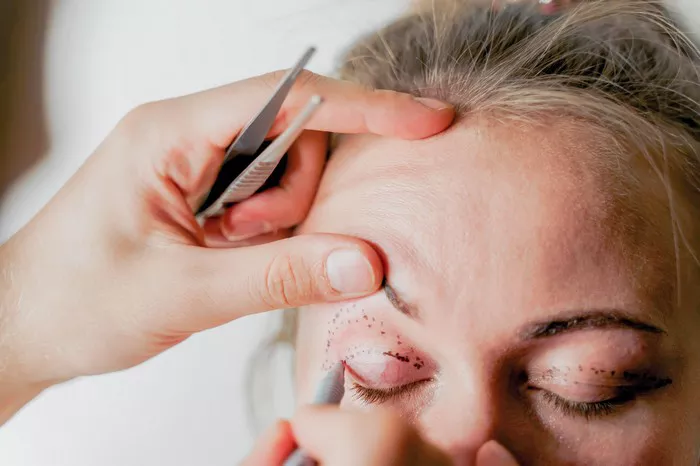Upper eyelid surgery, also known as blepharoplasty, is a popular cosmetic procedure aimed at rejuvenating the appearance of the upper eyelids. This surgical intervention involves removing excess skin, fat, and muscle from the eyelids to achieve a more youthful and refreshed look. While many individuals opt for this procedure to enhance their aesthetic appeal, concerns about safety often arise. In this article, we will explore the safety aspects of upper eyelid surgery, considering the procedure, potential risks, and factors that contribute to a successful outcome.
Understanding Upper Eyelid Surgery
Upper eyelid surgery is typically performed under local anesthesia with sedation or general anesthesia, depending on the patient’s preference and the surgeon’s recommendation. The surgeon begins by making incisions along the natural creases of the upper eyelids, which helps minimize visible scarring. Excess skin and fat are then carefully removed, and underlying muscles may be adjusted to achieve the desired aesthetic outcome. The incisions are meticulously closed using fine sutures.
The Importance of Choosing a Qualified Surgeon
One of the key factors in ensuring the safety of upper eyelid surgery is selecting a qualified and experienced surgeon. A skilled surgeon with expertise in oculoplastic surgery or facial plastic surgery can significantly minimize the risk of complications and deliver optimal results. Before undergoing any surgical procedure, it is crucial to thoroughly research the surgeon’s credentials, training, and experience. Additionally, reviewing before-and-after photos of their previous patients can provide valuable insights into their skill level and aesthetic approach.
Potential Risks and Complications
Like any surgical procedure, upper eyelid surgery carries some potential risks and complications. However, with proper patient selection, meticulous surgical technique, and appropriate post-operative care, these risks can be minimized. Some potential risks include:
Bleeding: Excessive bleeding during or after surgery is rare but can occur. Surgeons take precautions to minimize bleeding during the procedure, and patients are advised to follow post-operative instructions to reduce the risk of bleeding.
Infection: While infections are uncommon, they can occur after any surgical procedure. Surgeons may prescribe antibiotics to minimize the risk of infection. Following proper hygiene and taking prescribed medications as directed are crucial for preventing infections.
Scarring: Incisions made during upper eyelid surgery are designed to be well-hidden within the natural creases of the eyelids. However, individual healing patterns can affect scarring. In most cases, the scars fade over time and become barely noticeable.
Dry Eyes: Temporary dryness and irritation in the eyes may occur after surgery due to changes in tear production. Eye drops or artificial tears can help alleviate these symptoms, and they usually resolve as the healing process progresses.
Asymmetry: Achieving perfect symmetry is challenging in any surgical procedure. While surgeons strive for symmetrical results, minor differences between the two eyelids may persist. These differences are often subtle and do not significantly affect the overall aesthetic outcome.
Vision Changes: In rare cases, patients may experience temporary blurred or double vision after upper eyelid surgery. These visual disturbances usually resolve on their own within a few days or weeks.
Eyelid Malposition: Although uncommon, eyelid malposition can occur, causing the eyelid to droop (ptosis) or pull away from the eye (ectropion). These complications may require additional surgical correction.
Numbness: Temporary numbness or altered sensation in the eyelid area is common after surgery. Sensation gradually returns to normal as the healing process progresses.
Factors Contributing to a Successful Outcome
While the potential risks and complications associated with upper eyelid surgery exist, several factors contribute to a successful and safe outcome:
Thorough Evaluation: A comprehensive pre-operative evaluation helps identify any underlying medical conditions or eye-related issues that may impact the surgery. This evaluation includes a detailed medical history, eye examination, and discussion of the patient’s goals and expectations.
Realistic Expectations: Open communication between the patient and the surgeon is vital to establish realistic expectations for the procedure. The surgeon should discuss the potential outcomes, limitations, and risks involved to ensure the patient is well-informed.
Individualized Treatment: Each patient’s anatomy and aesthetic goals are unique, and a skilled surgeon will tailor the surgical approach to meet those specific needs. This individualized treatment plan enhances the likelihood of achieving the desired results.
Follow-up Care: Adequate post-operative care, including regular follow-up visits with the surgeon, is essential for monitoring the healing process and addressing any concerns promptly. Patients should adhere to the post-operative instructions provided by their surgeon.
Conclusion
Upper eyelid surgery, or blepharoplasty, is generally considered a safe procedure when performed by a qualified and experienced surgeon. Like any surgical intervention, there are potential risks and complications involved. However, by choosing a skilled surgeon, understanding the procedure, and following proper post-operative care, individuals can minimize these risks and achieve satisfactory outcomes. If you are considering upper eyelid surgery, it is important to consult with a reputable surgeon who can evaluate your suitability for the procedure and guide you through the process, ensuring your safety and well-being every step of the way.

